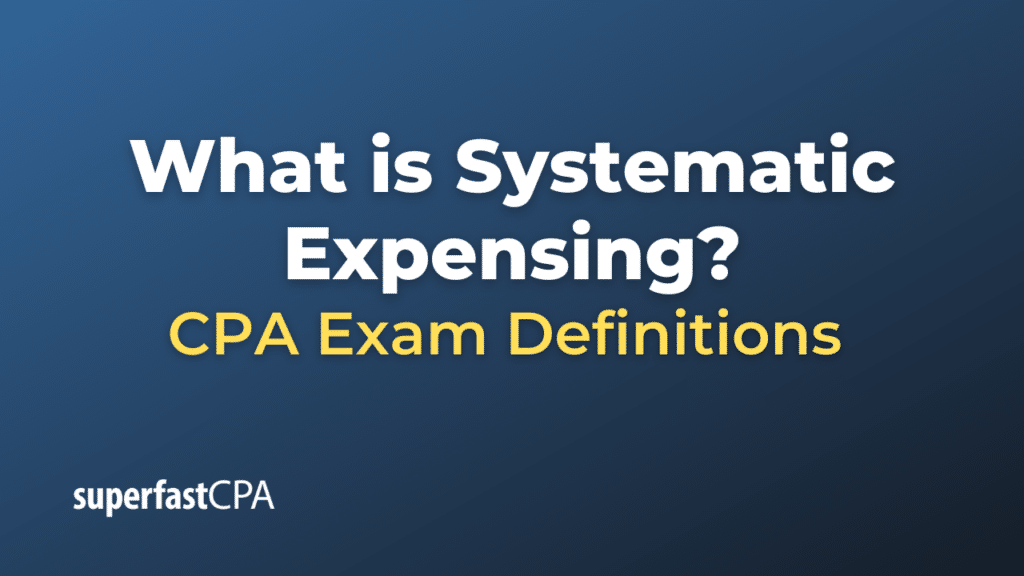Systematic Expensing
Systematic expensing refers to the consistent and regular allocation of the cost of an asset or expense over a predetermined period. In accounting, this method is used to spread out the cost of an asset (or certain expenses) over its useful life or over the periods in which the benefits of that asset or expense are consumed.
The most common form of systematic expensing is depreciation (for tangible assets) and amortization (for intangible assets). Both methods are used to allocate the cost of an asset over its useful life in a systematic manner, ensuring that the expense is matched with the revenue it helps to generate.
Example of Systematic Expensing
Let’s delve into an example involving systematic expensing related to a marketing campaign.
Scenario: XYZ Corporation’s Marketing Campaign
Background: XYZ Corporation launches a new product and decides to invest in a 3-year marketing campaign to promote it. The company spends $120,000 upfront on the creation of a series of video advertisements, which they intend to use over the entire 3-year period.
XYZ Corporation decides to use systematic expensing to spread the cost of the video advertisements over the 3 years, as the benefits from these ads will be realized over this period.
Systematic Expensing:
Given the total cost of the video advertisements ($120,000) and the duration of the campaign (3 years), XYZ Corporation would expense an equal amount each year using the straight-line method:
Annual Expense = Total Cost of Advertisements / Campaign Duration
Annual Expense = $120,000 / 3 = $40,000
Yearly Breakdown:
- Year 1:
- XYZ Corporation will expense $40,000 for the marketing campaign.
- The balance sheet will show a deferred expense (prepaid expense or asset) of $80,000 (representing the unexpensed amount for Years 2 and 3).
- Year 2:
- Another $40,000 is expensed.
- The deferred expense on the balance sheet now drops to $40,000.
- Year 3:
- The final $40,000 is expensed.
- The deferred expense on the balance sheet is now $0, as the entire cost has been systematically expensed over the 3-year period.
Outcome: By using systematic expensing, XYZ Corporation was able to match the cost of the video advertisements to the periods they benefitted from them. This approach provides a more accurate representation of the company’s yearly expenses and ensures the alignment of expenses with revenues generated from the campaign.
This example showcases how systematic expensing is used to allocate the cost of an expense (in this case, a marketing campaign) over the periods in which the benefits are consumed.












